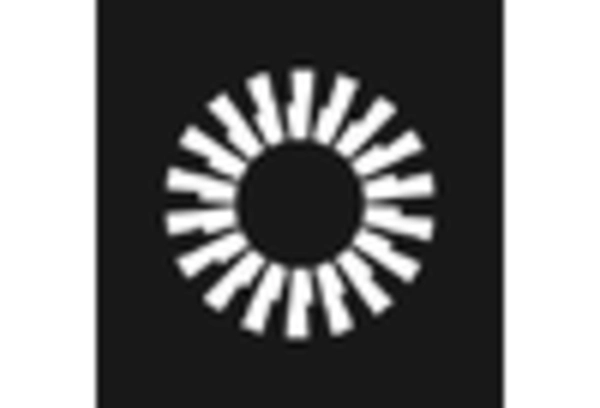The multifactor authentication market in Germany is characterized by a dynamic competitive landscape, driven by increasing cybersecurity threats and the growing demand for secure access solutions. Key players such as Microsoft (US), Google (US), and Okta (US) are strategically positioned to leverage their technological prowess and extensive resources. Microsoft (US) focuses on integrating multifactor authentication into its broader cloud services, enhancing user experience while ensuring security. Google (US) emphasizes innovation through its advanced security features, particularly in its Google Workspace offerings. Okta (US) is dedicated to providing seamless identity management solutions, which are crucial for enterprises navigating digital transformation. Collectively, these strategies foster a competitive environment that prioritizes innovation and user-centric solutions.
In terms of business tactics, companies are increasingly localizing their operations to better serve the German market, optimizing supply chains to enhance efficiency. The market structure appears moderately fragmented, with several players vying for market share. However, the influence of major companies is substantial, as they set benchmarks for security standards and customer expectations. This competitive structure encourages smaller firms to innovate and differentiate their offerings, contributing to a vibrant market ecosystem.
In October 2025, Microsoft (US) announced the launch of its new Azure Active Directory features, which include enhanced multifactor authentication capabilities tailored for European clients. This strategic move underscores Microsoft's commitment to addressing regional compliance requirements while expanding its footprint in the European market. By enhancing its security offerings, Microsoft (US) not only strengthens its competitive position but also aligns with the increasing regulatory demands for data protection in Germany.
In September 2025, Google (US) unveiled its latest security key, designed to provide a more robust multifactor authentication experience for users. This product launch reflects Google's ongoing investment in security technology, aiming to reduce the risk of phishing attacks and unauthorized access. The introduction of this security key is likely to enhance user trust and loyalty, positioning Google (US) as a leader in the multifactor authentication space.
In August 2025, Okta (US) entered a strategic partnership with a leading German telecommunications provider to integrate its identity management solutions into the provider's offerings. This collaboration is significant as it allows Okta (US) to tap into a broader customer base while enhancing the security posture of the telecommunications provider's clients. Such partnerships are indicative of a trend where companies seek to leverage synergies to enhance their market presence and service offerings.
As of November 2025, the multifactor authentication market is witnessing trends such as increased digitalization, the integration of AI technologies, and a heightened focus on sustainability. Strategic alliances are becoming more prevalent, as companies recognize the value of collaboration in enhancing their competitive edge. Looking ahead, the competitive differentiation in this market is likely to evolve, shifting from price-based competition to a focus on innovation, technological advancements, and supply chain reliability. This transition suggests that companies that prioritize these aspects will be better positioned to thrive in an increasingly complex and demanding market.

















Leave a Comment